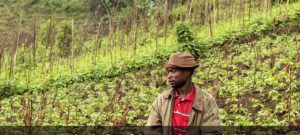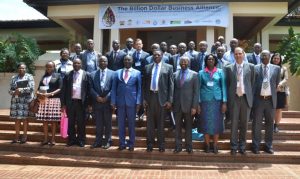 CGIAR has launched a new portfolio of research programs designed to reduce by 150 million the number of people suffering from hunger in developing nations. By transforming agricultural and food systems, the CGIAR Portfolio 2017-2022 is the second generation of CGIAR’s Research Programs and Platforms aimed at reducing rural poverty, improving food and nutrition security and improving natural resources and ecosystem services.
CGIAR has launched a new portfolio of research programs designed to reduce by 150 million the number of people suffering from hunger in developing nations. By transforming agricultural and food systems, the CGIAR Portfolio 2017-2022 is the second generation of CGIAR’s Research Programs and Platforms aimed at reducing rural poverty, improving food and nutrition security and improving natural resources and ecosystem services.
“No dialogue can be more important than how to feed our world in the face of climate change. There is no doubt that investment in agricultural research has one of the highest returns. I call for greater support to CGIAR,” says Akinwumi Adesina, President of the African Development Bank.
“With more than two billion people suffering from micronutrient deficiency, 795 million of whom are undernourished, the challenge to sustainably, nutritiously and securely feed the growing population is clear,” says Elwyn Grainger-Jones, Executive Director of the CGIAR System Organization. “As the world’s largest agricultural research for development partnership, CGIAR is uniquely positioned to deliver multidisciplinary impacts at scale to improve the livelihoods of the most vulnerable, while also strengthening the planet’s fragile ecosystem.”
CGIAR’s research focuses on delivering synergies across projects, integration for achieving development impacts at scale and providing scientific leadership. CGIAR embraces innovation in agri-food systems and the potential for big data and information and communication technologies to contribute significantly to achieving development outcomes. The new portfolio has been guided by the CGIAR Strategy and Results Framework in its development and implementation.


 Trees for Food Security Project goal is to enhance food security for resource-poor people in rural Eastern Africa through research that supports national programmes to scale up the use of trees within farming systems in Ethiopia and Rwanda and then scale out successes to relevant ago-ecological zones in Uganda and Burundi.
Trees for Food Security Project goal is to enhance food security for resource-poor people in rural Eastern Africa through research that supports national programmes to scale up the use of trees within farming systems in Ethiopia and Rwanda and then scale out successes to relevant ago-ecological zones in Uganda and Burundi. Water scarcity is a critical constraint to Kenya’s socioeconomic development and its achievement of vision 2030.On 11 April 2017, the Government and partners from the development and business communities launched the Kenya chapter of the Billion Dollar Alliance for Rainwater Harvesting, a continent-wide, multi-actor alliance designed to scale up farm pond technology for agribusiness and livelihood resilience for dry land farming systems.Kenya’s rainwater potential is more than 350 billion cubic meters. If captured and managed, this water is enough to support a population of 233 million people.This partnership is led by World Forestry Center and World Food Program.The main goal of this partnership is to increase farmers’ income and to improve food security. The partnership will provide technical, financial, policy and research support to the smallholder farmers.Impediments such as slow implementation and low technology adoption may hamper the realization of this process.However, the minister for water and irrigation reaffirmed the stakeholders of the government’s support in creating an enabling environment through proper policy implementation aimed at streamlining the government’s Water Sector and increase access to clean water for all in adequate quantity and quality at an affordable price as envisaged in Vision 2030 and the Constitution of Kenya.
Water scarcity is a critical constraint to Kenya’s socioeconomic development and its achievement of vision 2030.On 11 April 2017, the Government and partners from the development and business communities launched the Kenya chapter of the Billion Dollar Alliance for Rainwater Harvesting, a continent-wide, multi-actor alliance designed to scale up farm pond technology for agribusiness and livelihood resilience for dry land farming systems.Kenya’s rainwater potential is more than 350 billion cubic meters. If captured and managed, this water is enough to support a population of 233 million people.This partnership is led by World Forestry Center and World Food Program.The main goal of this partnership is to increase farmers’ income and to improve food security. The partnership will provide technical, financial, policy and research support to the smallholder farmers.Impediments such as slow implementation and low technology adoption may hamper the realization of this process.However, the minister for water and irrigation reaffirmed the stakeholders of the government’s support in creating an enabling environment through proper policy implementation aimed at streamlining the government’s Water Sector and increase access to clean water for all in adequate quantity and quality at an affordable price as envisaged in Vision 2030 and the Constitution of Kenya.